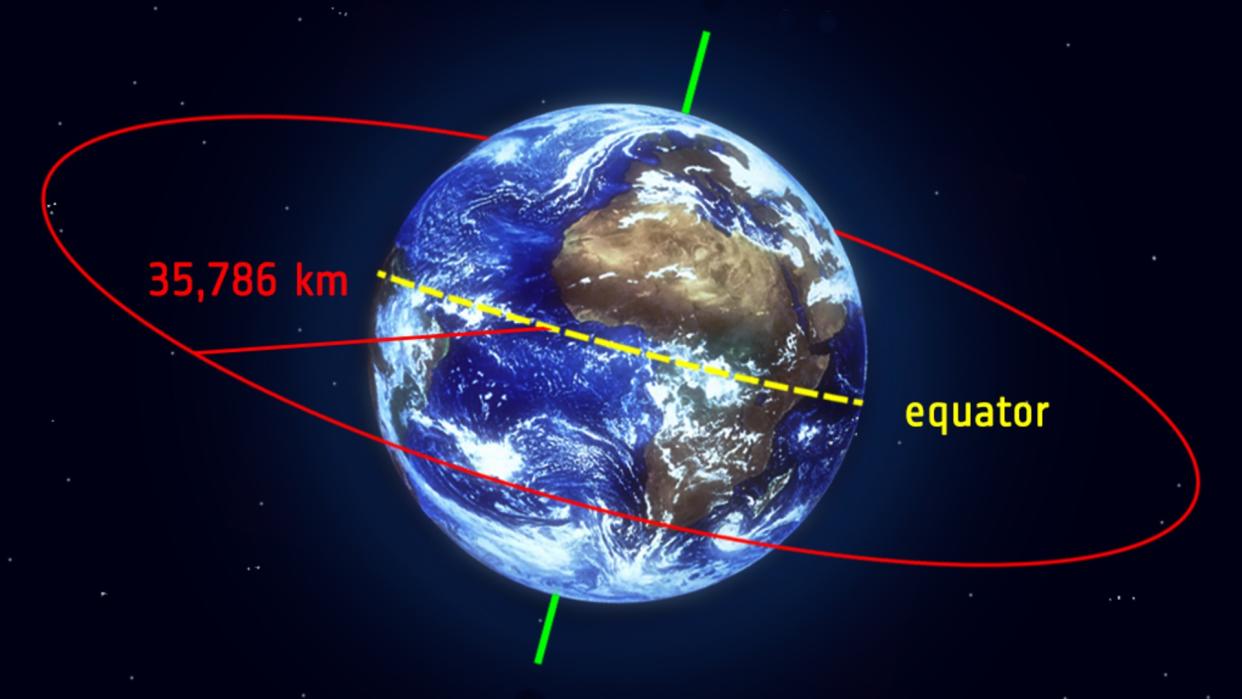A Chinese spacecraft has been checking out US satellites high above Earth

A Chinese satellite launched in 2018 has been inspecting other nations' spacecraft high above Earth in geostationary orbit.
Tongxin Jishu Shiyan Weixing-3 (TJS-3), named vaguely as a communications experiment satellite, was sent up into geostationary orbit in late 2018. It then released a small subsatellite, possibly to help test TJS-3's capabilities.
Orbital data reveals that TJS-3 has been making close approaches to American satellites in recent months. For example, the Twitter account Orbital Focus notes that the satellite has been drifting along the geostationary belt, but pausing to take a closer look at satellites USA 233 and USA 298, both thought to be military communications satellites operated by the U.S. Space Force.
Related: The latest news about China's space program
Mission UpdateTJS-3 p/l 1 (43874/2018-110A), China GEO inspectorSat at 59° east, initially alongside TJS-3 p/l 2 that moved to graveyard 2021 DecBegan wandering 2022 Jul 5 with brief stops near: USA 233 (38070/2012-003A) - 2022 Sep 13USA 298 (45465/2020-022B) - 2023 Feb 8February 16, 2023
Satellites in geostationary orbit (GEO) operate at 22,236 miles (35,786 kilometers) above Earth, where their velocity matches the rotation of the planet and sees them appear fixed over one point on the surface below. This orbit is thus highly prized for its use for communications and other purposes.
At the same time, a spacecraft that either raises or lowers its orbit a few tens of miles will be able to drift west or east respective to other satellites, allowing a satellite over time to sweep past others and take a look.
Satellite Dashboard, a web tool that collates and analyzes space situational awareness (SSA) data, reveals that TJS-3 approached as close as 3.8 miles (6.2 km) to USA 233 on Oct. 31, 2022.
Related stories:
— Chinese scientists call for plan to destroy Elon Musk's Starlink satellites
— 2 Russian satellites are stalking a US spysat in orbit. The Space Force is watching.
— Is Earth-moon space the US military's new high ground?
U.S., Russian and Chinese satellites have all increasingly been scouting each others' satellites in GEO in recent years, using close approaches to attain images and other data.
This has led to a game in which countries aim to learn about each others' spacecraft and test their counterspace and SSA capabilities.
Little is known about the TJS-3 satellite, but the U.S. and other nations will doubtless be watching its movements closely.
Follow us on Twitter @Spacedotcom or on Facebook.

